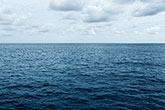Opening the doors to LNG
In January 2015, Lithuania’s LNG terminal started commercial operations. The country, and the entire Baltic region, now has an alternative source of gas imports, as well as an opportunity for LNG business development.
In 2010, Lithuania set a goal to implement an LNG terminal at the ice-free port of Klaipeda, in order to reduce the country’s dependency on its single gas supplier – Russia’s Gazprom. The task was given to state-controlled oil terminal operator, SC Klaipedos Nafta. The construction phase of the floating storage and regasification unit (FSRU) started in 2012.
As the newcomer in the LNG sector, Klaipedos Nafta put considerable effort into gathering experienced foreign and local specialists, consultants and contractors. At the start of the project, the front end engineering design (FEED) stage was carried out by US company Fluor A/S. The FEED stage established the technical details for engineering, procurement and design contractors. While the project has been split into two parts – the pipeline and the jetty – the whole terminal relies on floating storage and regasification technology. The main role of the terminal is to receive LNG from ocean-going LNG carriers, store LNG, regasify it and supply natural gas to the main gas grid. The terminal also offers an LNG reloading service, transferring the gas into smaller vessels for transport to other LNG import terminals.
International and local cooperation
Construction of the terminal was a challenge for the project team, which at the start consisted of just a few personnel, but has since grown to more than 50 people. At the outset, in order to attract the highest level of knowledge and competence, Klaipedos Nafta issued international tenders for contractors. The first contract was signed in 2012 between Klaipedos Nafta and Norwegian company Höegh LNG. In accordance with international practice, the contract is a 10-year FSRU lease agreement, with an option for Klaipedos Nafta to purchase the FSRU at the end of the lease, and operate it itself. The FSRU lease contract guarantees elements such as the maintenance of the FSRU and the provision of crew. Höegh LNG cooperated with Hyundai Heavy Industries Co. Ltd (HHI), contracting the South Korean shipyard to build the FSRU for Lithuania and to deliver it in less than two years. The ship, symbolically named Independence, arrived in Klaipeda port on 27 October 2014. The timing was significant, as Klaipedos Nafta was obliged to set up an alternative gas supply source until 3 December 2014. The FSRU Independence can store 170 000 m3 of LNG and can fully cater for Lithuania’s gas demand of approximately 2.4 billion m3/yr. Moreover, the FSRU can satisfy up to 90% of the Baltic countries’ gas needs, because…..
This article originally appeared in the May 2015 issue of LNG Industry. To read the full version of this article, sign in or register for a free subscription today.
Written by Indre Miliniene, SC Klaipedos Nafta, Lithuania. Edited by Callum O'Reilly
Read the article online at: https://www.lngindustry.com/special-reports/26052015/opening-the-doors-to-lng-820/
You might also like
OLT completes uninstallation of Livorno Terminal
OLT Offshore LNG Toscana has confirmed that the uninstallation of the FSRU Toscana terminal has concluded, and the unit will be tugged to Genoa.


